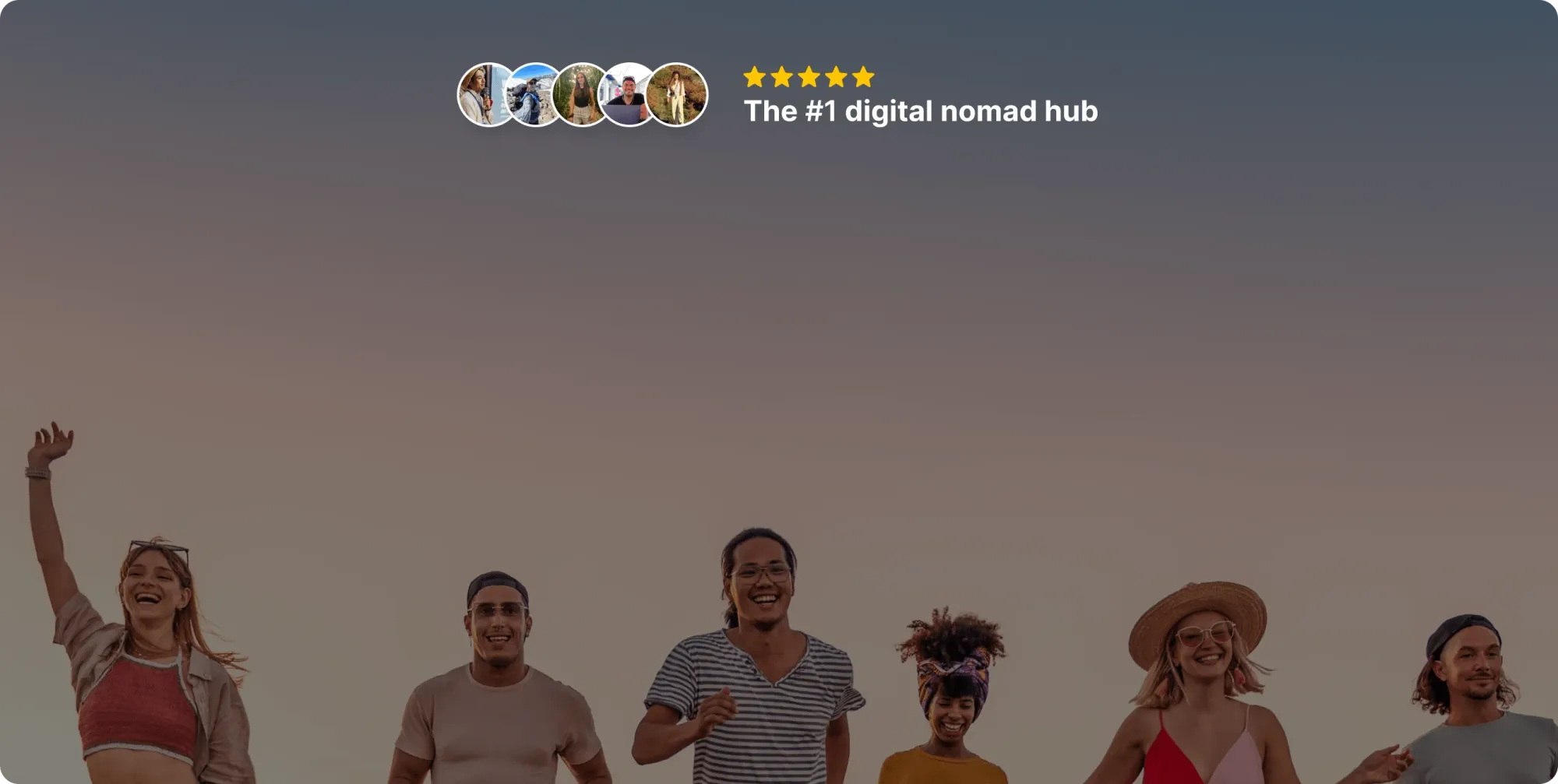Pros and Cons of eSIMs for International Travel

Back in the days, the way international travelers would go about getting data abroad was only through local SIM cards. There was no way around it, as providers from back home would charge an insane amount of money.
But buying local SIM cards in a new place you don’t know anything about, it’s not always easy. Many countries have their own places where you can buy SIM cards from airports, where local vendors try to overcharge you, to hidden local shops you didn’t know existed. Not counting that sometimes they require you to go through long processes and provide your passport for complicated registrations.
But since eSIMs got popular, life literally changed for international travelers and digital nomads. We share the advantages and disadvantages of this new technology, so keep reading to learn more.
What is an eSIM?
An eSIM is basically a digital version of a regular SIM card. They do the same job as a local SIM card but they're entirely digital (it’s already built into your phone), so you can activate a plan directly on your phone without ever swapping anything in or out.
What Are the Advantages of eSIM Cards for Travel?
From traveling around with way too many SIM cards in our backpacks over the years, these are the things we genuinely like about using eSIMs instead.
You're online as soon as you land
The best part of eSIMs is how fast you can get online. You activate the eSIM, and that’s it, you’re connected. No need to wander around an airport looking for a SIM shop or trying to explain what plan you want to a random shop way far from home. We usually activate ours while I’m waiting to board. That way, the plan doesn’t start counting down early, and I land with data already working. And you can always switch to your eSIM whenever you want (super useful when you need a bank code or just want to stay reachable on your usual number), or even supplement it with a local SIM card.
They're extremely easy to set up
Most eSIMs are surprisingly quick to install. In our experience with reviewing tons of eSIMs, the most convenient has always been Holafly: you simply scan a QR code and you're basically done. And when QR codes aren’t an option, you can also install Holafly manually by entering the activation details they provide. On iOS 17.4 and newer, their app can even guide you through the whole process automatically with on-screen prompts (not all providers offer this!). Either way, it only takes a couple of minutes, and you’re good to go.
They are cheaper than international plans
Who likes to pay an absurd daily fee on top of their own phone plan? Many carriers usually charge a "pay-per-use on the days you use it" model for their main international travel options. For instance, US carriers like Verizon or AT&T charge $12/day for most countries, which, if you ask me, it’s way too much. eSIMs not only avoid paying for roaming fees but are also way cheaper than buying an international plan from your carrier back home.
You are covered in multiple countries
But that’s not all. You can also buy one eSIM for multiple countries, so you save yourself the hassle of buying a local SIM card for each country you visit. All without finding that annoying paper clip to open your phone tray (that’s a big plus if you ask me!).
They're a great backup
An eSIM is also great to have on days when your accommodation's Wi-Fi is slow, or you’re stuck at an airport with a connection that barely loads Google. Having mobile data ready to go makes working remotely a lot less stressful. Holafly even offers unlimited data plans in over 200 destinations, so you never need to worry about running out. Their unlimited plans work in a lot of countries, and they don’t have a strict fair-use cap like some others.
What Are the Cons of eSIM Cards?
As handy as eSIMs are, there are a few downsides you should know about, just so you don’t get stuck when you actually need them.
Not all phones support them
One thing to keep in mind is that not every phone supports eSIM yet. Most modern devices do, including recent iPhones, Samsung Galaxy phones, and even older models like the Google Pixel 3, but it’s still worth double-checking before you buy a plan. As a general rule, iPhones and Androids from around 2018 onward are usually fine.
Holafly actually built a quick compatibility checker next to each eSIM so you can confirm your device before purchasing. And if you want to be extra sure, you can also look through their full list of supported phones.
Hotspot and tethering might be blocked
This one can be annoying if you work from your laptop a lot like us. Some eSIM providers block hotspot/tethering completely, which means you can’t use your phone as wifi for your laptop. Not great if you rely on that while traveling.
The reason we mentioned Holafly earlier is also because it’s one of the few that does allow hotspots on many of their plans, which is why we use them a lot. But not every provider does, so it’s definitely something to check before you buy, especially if your whole workday depends on tethering.
You don’t always get a local phone number
Most eSIMs don’t include a local number (although some do), and for travel, it’s usually fine since WhatsApp still works on your regular number anyway.
But it can get a bit annoying if you’re staying somewhere longer and suddenly need a local number for things like deliveries or signing up for local services. Not a deal-breaker, but just one of those small things to remember if you’re planning to stay put for a bit.
Not all eSIMs offer unlimited data
When it comes to having unlimited data, eSIMs often struggle to offer such plans so not all providers do offer them. However, some do, like Holafly for instance, which is famously known for its unlimited plans. Their unlimited plans for destinations like the UK, the US, Japan, and China start at around $6.90 for a 1-day pass and go up to about $74.90 for 30 days, depending on the destination. They also offer a monthly plan, which works kind of like a subscription. It’s about $64.90/month and gives you unlimited global data and hotspot (on the Unlimited monthly plan), or you can get 25GB data and hotspot (with the Light monthly plan)
However, something to still keep in mind is that many eSIM providers have a fair-use policy, meaning your speed drops after a certain amount of high-speed data. You still get normal, usable speeds, though, even if you’re relying on your phone all day for maps, hotspotting, video calls, and uploading stuff.
They don’t cover remote areas
Another thing to keep in mind is that eSIMs still rely on local networks, so if you are in a remote area, you might struggle to get signal, exactly like any other physical SIM card.
Is a Traditional SIM Card Better Than an eSIM?
Even though we personally stick to eSIMs most of the time, there are actual situations where a local SIM genuinely makes more sense. Here are the main ones:
- You need a local phone number: If you’re dealing with banks, deliveries, rentals, or any service that sends verification codes by SMS, a travel eSIM won’t always help.
- You’re on a tight budget: Local SIMs are almost always cheaper. In a lot of countries, you can walk into a shop and get a good amount of data for a few dollars.
- You’re staying long-term: If you’re planning to base yourself somewhere for a month or more, a local SIM usually makes life simpler as you can get cheaper data and a proper local number.
That said, even knowing all this, we still usually go with an eSIM because the convenience is worth every penny. You land, turn on your phone, and you’re connected. So, if you care more about convenience than squeezing out the lowest possible price, the tradeoff is often worth it.
Are eSIMs Safe?
eSIMs are considered safe. In fact, they’re generally more secure than physical SIM cards. That’s because they’re built directly into your phone, so nobody can just pop them out, swap them, or throw them into another device.
If someone steals your phone, they can't simply pull out your SIM like in the old days.
There’s also a much lower risk of SIM cloning because the eSIM lives inside a tamper-resistant chip, and everything is encrypted. And if your phone ever gets lost or stolen, your eSIM provider can deactivate the eSIM remotely, which is way quicker than dealing with a physical SIM replacement.
That said, eSIMs aren't magically immune to everything. Someone could still try to trick your carrier into moving your number to another device.
It’s rare, but it happens, and it has nothing to do with the eSIM itself but it’s more about your carrier’s identity checks (like how well they verify it’s really you on the phone before making changes).
Regular digital threats like phishing and malware still apply too (i.e. if someone gets into your phone, the SIM type doesn’t really matter).
If you want to be extra safe, here’s what we personally do:
- Use strong passwords and an authenticator app (not SMS codes) for important logins
- Keep your phone locked with Face ID or a solid passcode
- Ignore any fishy texts/emails asking for “verification”
- Keep your phone software updated
- Make sure “Find My iPhone” / “Find My Device” is turned on, just in case
What is the Best eSIM Card for Travel?
After trying a bunch of eSIMs over the years, the one that we use consistently and we feel recommend is Holafly.
Their biggest perk we value so much is their unlimited data in 200+ destinations. When you’re constantly on the move, and your phone is the only way to reach your family and friends as well as your only tool to survive the challenges of travel (and for some of us even their main work tool!), unlimited data removes a lot of stress. Plus, Holafly actually allows hotspot/tethering up to 1GB/day, something many eSIM providers still block for no obvious reason.
Beyond that, they also keep things very straightforward. There are no hidden costs, their support team is available 24/7 with real people, and they offer a surprisingly wide range of plans, including 15+ regional eSIMs and even one global eSIM if you’re traveling across multiple continents.
And if your plans change (which for me happens almost weekly), you can refund any unactivated plan within 6 months. They also let you choose the exact number of days you need, anywhere from 1 to 90, which is perfect if you don’t need a full month. Speed-wise, they have solid 4G (and even 5G) in most places so that’s something we definitely care about (who wants to end up in a foreign place with no signal).
Final Verdict: Should You Get an eSIM for Your Travels?
If you travel often, I’d say yes. Try a travel eSIM at least once. Being able to land in a new country, switch on your phone, and instantly have data without queues, paperwork, or language barriers… it just makes travel smoother.
For short trips or any kind of fast travel, eSIMs honestly feel like cheating. You don’t have to plan anything, you don’t have to compare local carriers, and you don’t end up with a drawer full of random SIM cards from every country you’ve ever visited.
If you’re curious where to start, Holafly is the one we usually recommend. It’s straightforward, it works in a ton of countries, and it’s ideal if you’re doing multi-country trips or just want unlimited data without thinking too hard.
FAQs
Can I use a travel eSIM and my regular SIM at the same time?
Yes. Most phones let you use both. Your regular SIM stays active for calls and WhatsApp, while the eSIM handles your data when you’re abroad. This is how most digital nomads travel.
Will I get a phone number with an eSIM?
Usually not. Most travel eSIMs are data-only, so you’ll keep using your normal number for things like WhatsApp. Holafly Plans are one of the few exceptions, as they include an SMS-only number for things like verification codes. But if you need a full local number for calls or long-term use, a local physical SIM is still the better option.
Do eSIMs support personal hotspot?
Some do, some don’t. Holafly allows hotspot on many of their plans (up to 1GB/day), but other providers block it completely. Always check before you buy, especially if you work from your laptop.
What happens when the eSIM expires?
Once your plan runs out, the eSIM simply stops giving you data. You can remove it, ignore it, or install a new one, whatever you prefer.
Can I install multiple eSIMs on one phone?
Yes. Most newer phones let you store several eSIMs at once (some models hold up to 10). You can switch between them in settings without swapping anything physically.
Will an eSIM work in the US?
Yes, as long as your phone supports eSIM and is unlocked. The US has full eSIM support, and providers like Holafly offer US plans.
Are eSIMs safe? Any privacy concerns?
eSIMs are generally considered safe. Your data still runs through the local mobile network, so privacy risks are the same as using any SIM abroad.
Ready to Give Travel eSIMs a Try?

Join our global
digital nomad community
Join us for free
Freaking Nomads is supported by you. Clicking through our links may earn us a small affiliate commission, and that's what allows us to keep producing free, helpful content. Learn more





 Travel tips, hacks, and news
Travel tips, hacks, and news Exclusive travel discounts
Exclusive travel discounts Offers and promotions
Offers and promotions Digital nomad inspiration
Digital nomad inspiration Latest articles form our blog
Latest articles form our blog